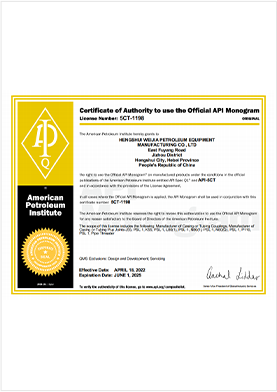- Afrikaans
- Albanian
- Amharic
- Arabic
- Armenian
- Azerbaijani
- Basque
- Belarusian
- Bengali
- Bosnian
- Bulgarian
- Catalan
- Cebuano
- Corsican
- Croatian
- Czech
- Danish
- Dutch
- English
- Esperanto
- Estonian
- Finnish
- French
- Frisian
- Galician
- Georgian
- German
- Greek
- Gujarati
- Haitian Creole
- hausa
- hawaiian
- Hebrew
- Hindi
- Miao
- Hungarian
- Icelandic
- igbo
- Indonesian
- irish
- Italian
- Japanese
- Javanese
- Kannada
- kazakh
- Khmer
- Rwandese
- Korean
- Kurdish
- Kyrgyz
- Lao
- Latin
- Latvian
- Lithuanian
- Luxembourgish
- Macedonian
- Malgashi
- Malay
- Malayalam
- Maltese
- Maori
- Marathi
- Mongolian
- Myanmar
- Nepali
- Norwegian
- Norwegian
- Occitan
- Pashto
- Persian
- Polish
- Portuguese
- Punjabi
- Romanian
- Russian
- Samoan
- Scottish Gaelic
- Serbian
- Sesotho
- Shona
- Sindhi
- Sinhala
- Slovak
- Slovenian
- Somali
- Spanish
- Sundanese
- Swahili
- Swedish
- Tagalog
- Tajik
- Tamil
- Tatar
- Telugu
- Thai
- Turkish
- Turkmen
- Ukrainian
- Urdu
- Uighur
- Uzbek
- Vietnamese
- Welsh
- Bantu
- Yiddish
- Yoruba
- Zulu
bull plug dimensions
Understanding Bull Plug Dimensions A Comprehensive Overview
In the realm of piping systems, ensuring a leak-proof and secure connection is paramount for efficiency and safety. One crucial component that facilitates this is the bull plug. Bull plugs are devices used to seal the ends of pipes or fittings, ensuring that no substance leaks from the system. They come in various shapes and sizes, but understanding the dimensions and specifications of bull plugs is essential for any engineering or construction project.
What is a Bull Plug?
A bull plug, often referred to as a pipe plug or end plug, is typically designed to seal the end of a pipe or fitting. It serves multiple purposes, from preventing contamination during storage and transport to maintaining pressure within a fluid system. Available in various materials like steel, PVC, and brass, the choice of material often depends on the application it is intended for, such as water, gas, or chemical transport.
Importance of Dimensions
The dimensions of bull plugs, which include diameter, length, and thread size, are critical for ensuring a proper fit within a piping system. A mismatch in dimensions can lead to leaks, system failures, and ultimately, safety hazards. Therefore, understanding the standard specifications is vital for anyone working with piping installations or repairs.
1. Diameter The diameter of a bull plug must match the inner diameter of the pipe it is intended to seal. Common sizes typically range from 1/8 inch to several inches, accommodating standard pipe sizes used in various industries. For example, a bull plug designed for a 1-inch pipe will have an outer diameter slightly less than one inch to ensure a snug fit.
2. Length The length of a bull plug can vary depending on the pipe design it is used with; however, standard lengths typically range from 1 inch to several inches. Length can influence the ease of installation and the effectiveness of the seal. Shorter plugs are generally easier to handle but may not provide as durable a seal in high-pressure applications.
bull plug dimensions

3. Thread Size Many bull plugs feature threaded ends for compatibility with threaded pipes and fittings. Understanding the thread size and type (such as NPT, BSPT, etc.) is crucial, as mismatched threading can compromise the seal, leading to leaks. Standard thread sizes are listed in inches, and it’s important to choose a bull plug with matching threading specifications.
Common Materials Used in Bull Plugs
The choice of material for bull plugs is influenced by the application and the media being transported. Here are some popular materials used
- Steel Ideal for high-pressure and high-temperature applications, steel bull plugs offer durability and strength. However, they are prone to corrosion if not properly coated. - Brass Known for its corrosion resistance and malleability, brass is commonly used for applications involving water or gas. It provides a tight seal and is less reactive than steel. - PVC For applications involving chemical transport or situations where corrosion could be a concern, PVC plugs are an economical and effective solution. They are lightweight, resistant to a wide range of chemicals, and easy to install.
Analyzing Applications
Bull plugs are prevalent in various industries, including oil and gas, water treatment, and construction. In oil and gas industries, they are used to cap off wells and pipelines, ensuring safety during transport and storage. In construction, they seal plumbing and HVAC systems, while in water treatment plants, they help maintain system integrity.
Conclusion
Understanding the dimensions and materials of bull plugs is essential for ensuring a secure fit and a reliable seal within any piping system. With variations in diameter, length, and thread size, selecting the right bull plug for your application can significantly impact the efficiency and safety of your project. Whether working with steel, brass, or PVC, the integrity of a piping system often hinges on these small yet crucial components. Investing time in learning about bull plug dimensions can save time, reduce costs, and enhance system reliability for any engineering task.
-
Tubing Pup Joints: Essential Components for Oil and Gas OperationsNewsJul.10,2025
-
Pup Joints: Essential Components for Reliable Drilling OperationsNewsJul.10,2025
-
Pipe Couplings: Connecting Your World EfficientlyNewsJul.10,2025
-
Mastering Oilfield Operations with Quality Tubing and CasingNewsJul.10,2025
-
High-Quality Casing Couplings for Every NeedNewsJul.10,2025
-
Boost Your Drilling Efficiency with Premium Crossover Tools & Seating NipplesNewsJul.10,2025







